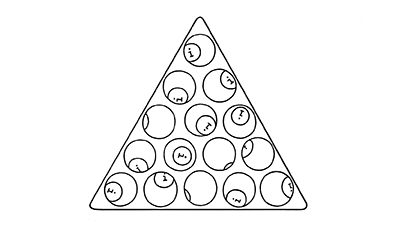Business Model Generation: Value proposition development
Leverage Customer Data
Create new value by collecting, analyzing, and preparing customer data

How: Generate revenue by either selling prepared customer data or leveraging it for your own purposes.
Why: Data is a strategic resource that can either be monetized as a product or leveraged to improve products or offer targeting.
Leveraging customer data has become a major area of opportunity due to technological advancements in data collection and processing. Companies that specialize in data acquisition and analysis are flourishing, reflecting the significant demand in this sector. This concept is often described with the metaphor, “data is the new oil,” as both raw materials must be refined and processed to have value for businesses. The parallels between the market potential of data and oil do not end there, as both also have similar value chains.
The Leverage Customer Data business model focuses on utilizing customer data as a valuable resource that can be accessed with the appropriate tools. This data is used to create individual profiles, which may have up to a thousand attributes. With the exponential growth of available data, it is not surprising that particularly large data sets have been given the name “big data.” These enormous data sets are difficult to evaluate using traditional database and management systems and often require data mining techniques for analysis. Thanks to increased computing capabilities, we are now able to analyze massive amounts of data more efficiently than ever before.
Where did the Leverage Customer Data business model pattern originate from?
The recognition of the value of data began in the 1980s with information management, which enabled the creation of personalized advertisements. Around this time, companies also began trying to directly address corporate clients through customer service groups in an effort to build personal relationships and better meet individual customer needs. In the 1990s, databases were developed to capture this type of data, allowing companies to more precisely target smaller customer groups. These early systems were precursors to modern electronic customer relationship management (CRM) systems, which received a boost from the implementation of customer loyalty programs, particularly those linked to credit cards.
As the internet became more widespread, customers began leaving more digital traces, making it easier for businesses, particularly retailers, to collect and use this information to create detailed and personalized customer profiles. However, the use of such data has also drawn criticism and raised concerns about data privacy.
Applying the Leverage Customer Data business model
The applications of big data are not limited to a specific industry, as companies in manufacturing, energy, finance, and healthcare all use it to their advantage. By leveraging customer data, companies can gain a competitive edge through identifying potential savings, conducting real-time market analyses, creating more effective advertisements, and discovering dependencies. In essence, big data serves as an incredibly powerful tool for decision-making.
Real life Leverage Customer Data examples
The core use case of filling out and browsing resumes lays the use case for monetization: ads and sales & recruiter search.
PatientsLikeMe
In itself a valuable P2P disease treatment discovery service, anonymous data is sold to pharma to improve their treatments.
Amazon
To retain customers and reduce the cost of acquiring new ones, Amazon uses sales data to identify relationships between products and forecast future customer behavior. This allows them to offer personalized recommendations and custom webpages, encouraging impulse purchases.
Google generates over 90% of its revenues from advertising, using data from its various free services, including search engines, calendars, email accounts, maps, and rating systems. It offers a personalized advertising service through AdWords and AdSense, which places customized ads among search results or on customer websites. Google also offers the website analysis tool Google Analytics for free to site owners.
Orange, Verizon, and T-Mobile
These telecommunications companies sell aggregated, anonymized customer data to third parties who can use it to make decisions such as where to build a new store.
23andMe
This genomics and biotechnology company offers rapid genetic testing online. Customers pay for the genetic test and access to the online database, which provides health and genealogical information. 23andMe uses the information for R&D and to offer personalized recommendations to customers.
Facebook and Twitter
Both social networks use user data to present personalized ads by third parties on their pages. While Facebook continues to expand on this business model, Twitter offers premium services that prioritize certain tweets in followers’ feeds as a form of advertising. Twitter also partners with third-party data analysis companies to give them unlimited access to its databases for market research, advertising, and R&D.
Trigger Questions
- How can you create value from customer data without compromising privacy concerns and regulations?
- How will leveraging customer data provide a better product or service to customers?
Proven business models that have driven success for global leaders across industries. Rethink how your business can create, deliver, and capture value.
Get your deck!Related plays
- Business Model Navigator by Karolin Frankenberger and Oliver Gassmann
- Towards utilizing Customer Data for Business Model Innovation: The Case of a German Manufacturer by Alexander Michalik, Frederik Möller, Michael Henke, BorisOtto
- Customer Data Monetization by Business Model Toolbox

